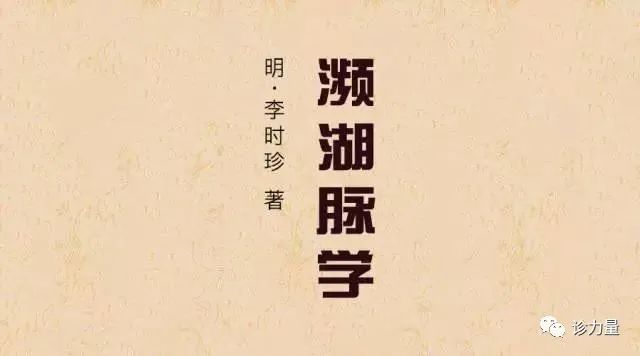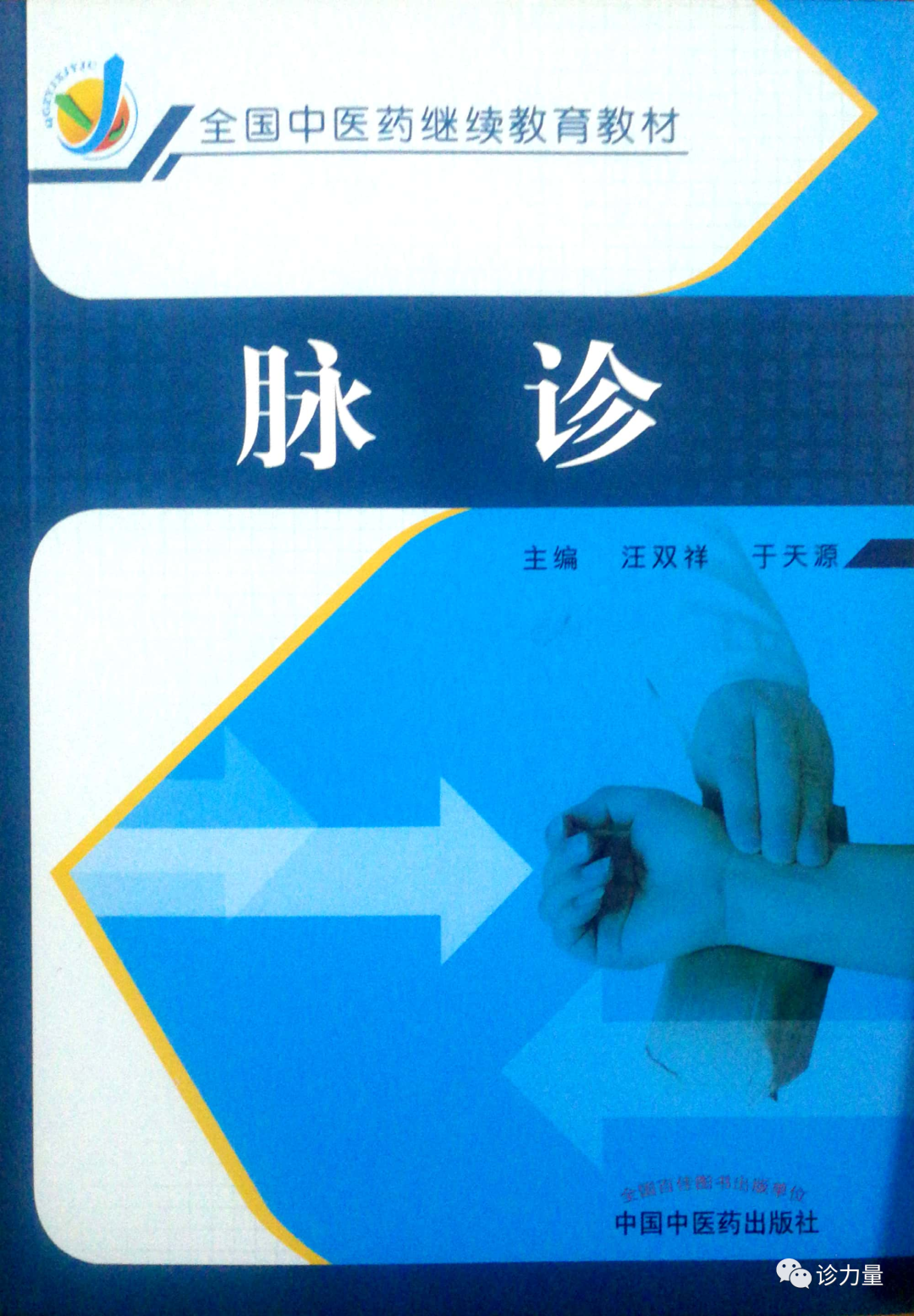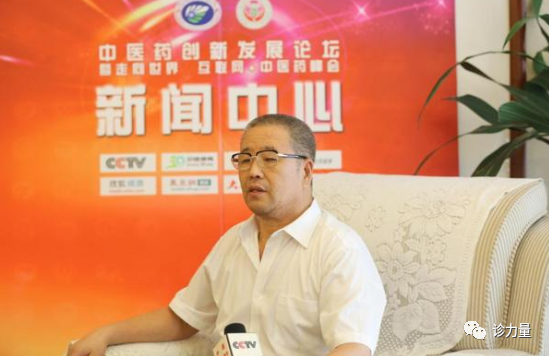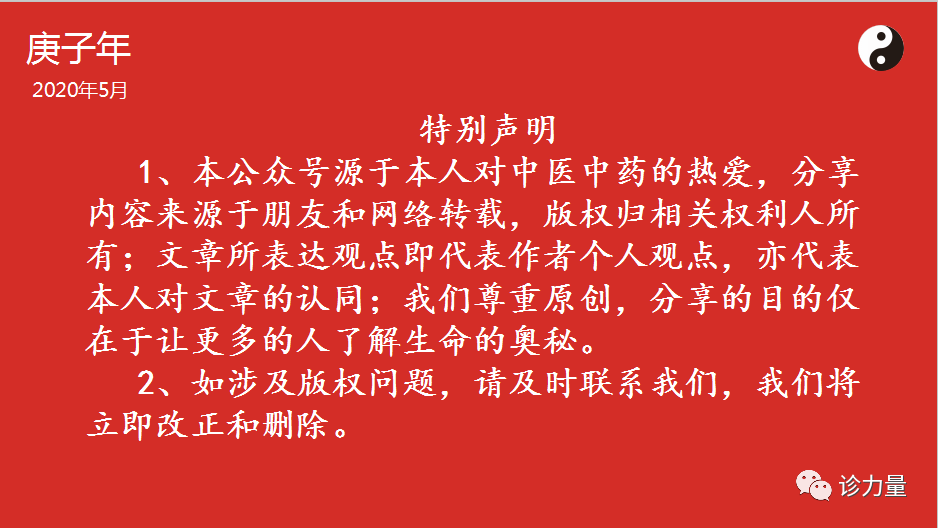
 Slippery (Yin within Yang)
Slippery (Yin within Yang)
The slippery pulse is characterized by a smooth and flowing sensation, akin to pearls rolling (as described in the ‘Pulse Classic’). It feels as if it is about to slip away. The slippery pulse indicates an excess of Yin Qi, hence the pulse flows smoothly like water. The pulse is the vessel of blood; when blood is abundant, the pulse is slippery, thus the kidney pulse is suitable; when Qi is abundant, the pulse is rough, thus the lung pulse is suitable. The ‘Pulse Treatise’ states: when pressed, it sinks, the three positions feel like pearls, neither advancing nor retreating, which does not distinguish between floating slippery, sinking slippery, or the size of the slippery pulse, this is the correct interpretation.
『Body Type Poem』 The slippery pulse is like pearls rolling, flowing smoothly yet returning. Do not count the slippery pulse as the same type; the pulse should be observed in terms of its count. (Slippery is like pearls, the count is six.)
『Main Disease Poem』 The slippery pulse indicates a decline in Yang Yuan Qi, phlegm causing various diseases and food causing disasters. It can lead to vomiting from above and blood accumulation below; in women, the pulse is regulated during pregnancy. A slippery pulse at the cun position indicates phlegm causing vomiting, sour swallowing, or coughing. At the guan position, food stagnation, liver and spleen heat, thirst, and dysentery should be observed at the chi position. The slippery pulse indicates phlegm and fluid; floating slippery indicates wind phlegm, sinking slippery indicates food phlegm, slippery and rapid indicates phlegm heat, and slippery and short indicates food stagnation. The ‘Pulse Treatise’ states: the guan position is slippery with stomach cold, while the chi position is slippery with blood accumulation, which contradicts the essence of women’s menstrual disorders.

The pulse image refers to the shape and dynamics of the pulse, including frequency, rhythm, morphology, and fullness, serving as one of the bases for TCM diagnosis, which is highly valued in traditional Chinese medicine. The pulse we commonly refer to is the pulse image of the patient. The pulse image has been recorded in many ancient TCM texts in China. Wang Shuhe of the Jin Dynasty summarized the pulse images into twenty-four types in the ‘Pulse Classic’, while Li Shizhen of the Ming Dynasty added three more types based on the twenty-four pulses in his work ‘Binhuhuaixue’, bringing the total to twenty-seven types. Li Zhongzi of the Ming Dynasty further added disease pulses in ‘Zhenjiayuan’, resulting in a total of twenty-eight pulse types, which have been widely used in later generations. Most TCM practitioners are familiar with these twenty-eight pulse types and use them as a basis for diagnosing diseases. However, the pulse images are not limited to these twenty-eight types; ancient physicians also summarized another fifteen pulse types, which hold significant importance in clinical diagnosis. Unfortunately, these fifteen pulse types are less known, and very few TCM doctors can master and apply them in practice. Regarding these fifteen pulse types, Wang Shuangxiang, through years of practice treating patients, has carefully experienced and studied them. Through extensive case practice over many years, he has finally been able to correspond these fifteen pulse types with the patients’ symptoms. Therefore, Wang Shuangxiang is not only proficient in the commonly used twenty-eight pulse types but also has profound insights into the lesser-known fifteen pulse types. In recent decades, with social development, many issues such as environmental pollution, food safety, and antibiotic abuse have emerged, leading to changes in human cells and unexpected diseases and chronic conditions, resulting in significant changes in constitution reflected in the pulse. Wang Shuangxiang has devoted himself to research, utilizing over forty years of experience and clinical insights, innovating and promoting on the basis of inheritance, making many new discoveries based on predecessors’ understanding of these pulse types. He has combined the commonly used twenty-eight pulse types with the less common fifteen pulse types, enabling him to skillfully use forty-three pulses to diagnose diseases, refining the categories of pulse images for symptom matching and expanding the coverage of pulse diagnosis. Notably, Wang Shuangxiang can correspond these forty-three pulse types with Western medical diseases, directly determining what Western medicine refers to as certain diseases or issues based on these pulse types. This is a groundbreaking contribution, akin to building a convenient bridge in the practice of integrating Chinese and Western medicine, representing a precious achievement of his long career.

The fifteen lesser-known pulse types are: Man pulse, Small pulse, Sharp pulse, Overflowing pulse, Transmission pulse, Erect pulse, Accumulation pulse, Hard pulse, He pulse, Soft pulse, Large pulse, Fu pulse, Wen pulse, Xie pulse, and Chong pulse. Regarding the characteristics of these fifteen pulse types, Wang Shuangxiang has provided a rough explanation based on his practice and insights, which I have organized as follows:(1) Man PulseIn 1985 and 1986, Wang Shuangxiang experienced the Man pulse while diagnosing patients. The Man pulse is characterized by a pulse that feels very laborious and obstructed under normal conditions of Qi and blood circulation and respiration, akin to a vehicle struggling on a wide road.(2) Small PulseThe Small pulse is even finer than the Thin pulse; it is delicate, while the Thin pulse is coarse, chaotic, and prickly. The Small pulse is refined, with a continuous and indistinct fine quality, which is the Small pulse. When does the Small pulse appear? It appears when the patient has multiple fibroids.The most significant role of the Small pulse in Wang Shuangxiang’s treatment and diagnosis is seen in conditions such as lung cancer, uterine fibroids, rectal polyps, pancreatic cancer, cholecystitis, stones, prostate lesions, and gastric mucosal lesions, all of which exhibit the Small pulse.(3) Sharp PulseBetween 1979 and 1981, Wang Shuangxiang identified the Sharp pulse in the pulse images of some fibroid patients. As the name suggests, the Sharp pulse is particularly sharp, like a needle tip, causing discomfort when touched. The Sharp pulse reflects uterine fibroids, and various fibroid conditions will exhibit the Sharp pulse.(4) Overflowing PulseIn 1989, Wang Shuangxiang began diagnosing patients through the Overflowing pulse. How to describe the Overflowing pulse? It is like using a large pump to irrigate a field, forcefully pushing water up. If the pulse vessel wall is thick and large, it resembles a pump pushing blood up, indicating high blood pressure. The arterial vessel wall cannot withstand this pressure, leading to bleeding and swelling. High blood pressure, myocardial infarction, and cerebral hemorrhage are all associated with the Overflowing pulse. Previously, there was no term for the Overflowing pulse; it was referred to as a stroke.The discovery of the Overflowing pulse is significant; it can indicate whether a patient will experience a cerebral hemorrhage within a month to three months or three years later.(5) Transmission PulseThe Transmission pulse conveys information. This pulse type indicates the nature of information transmission; for instance, a certain disease may not have manifested yet, but its signs can already be detected. This requires attention to the causes of the disease and what should be noted in daily life and diet.The Transmission pulse is characterized by a pulse that continuously fluctuates, with irregular thickness; sometimes it is thick, sometimes thin, with some areas feeling hard and others not, indicating abnormal transmission and a phenomenon of disconnection. The Transmission pulse plays a significant role in the prevention of diseases.(6) Erect PulseThe Erect pulse appears in patients with cardiovascular diseases after long-term use of antihypertensive medications, indicating symptoms of hypertension, myocardial infarction, and cerebral thrombosis or hemorrhage.(7) Accumulation PulseThe Accumulation pulse arises from excessive eating and drinking, leading to the accumulation of greasy blood lipids and cholesterol, causing abnormal obstruction and expansion of blood vessels.This is reflected in the pulse as blockages and residues that cannot be expelled during pulse diagnosis. Patients who frequently take medications may also exhibit the Accumulation pulse due to excessive intake of hormones and antibiotics, leading to impurities accumulating in the vessel walls.(8) Hard PulseThe Hard pulse appears in cases of arterial sclerosis in cardiovascular diseases. The pulse feels particularly hard, like a calcium deficiency, and cannot be pressed down; this is the Hard pulse, which can indicate the risk of cerebral thrombosis or myocardial infarction. The Hard pulse differs from the Overflowing pulse; the Overflowing pulse has disconnections and is not fully blocked, while the Hard pulse is always full, with no empty sections in the vessel walls during pulse diagnosis.(9) He PulseWang Shuangxiang took three years to comprehend the He pulse. The He pulse arises from poor rest and excessive fatigue, as well as irregular eating habits, leading to heart and cerebellar fatigue. In this case, the cells are normal, and blood circulation within the cell nucleus is normal, but the patient feels weak, has poor sleep quality, and experiences palpitations. Wang Shuangxiang sometimes tells patients that they do not need medication; changing their daily routine and diet can improve their condition. This pulse is the He pulse.(10) Soft PulseThe Soft pulse indicates a lack of desire for movement in Qi and blood, yet functionally it must move, leading to both Qi and blood deficiency. Generally, this Qi and blood issue arises from laziness; those who exercise regularly will not exhibit the Soft pulse. The Soft pulse does not equate to blood deficiency; there is still blood in the vessel walls, but it is reluctant to move, indicating low elasticity and function, with cells lacking vitality. To improve this condition, one must exercise and avoid laziness, which will gradually improve.(11) Large PulseThe Large pulse generally indicates tuberculosis, malignant tumors, and also appears in conditions like abscesses, colds, and typhoid.(12) Fu PulseThe Fu pulse indicates the presence of numerous acute conditions within the internal organs, where inappropriate medication leads to ineffective treatment, and the disease continues to recur. This phenomenon is called the Fu pulse. The cause of the Fu pulse is incorrect diagnosis and treatment, leading to Qi and blood deficiency, weakness in the limbs, and a body full of ailments. The pulse appears as if it is present yet faint, like a shadow.(13) Wen PulseThe Wen pulse is characterized by a particularly stable pulse, neither jumping nor erratic, neither coarse nor fine, but rather continuous and steady, yet with blockages in Qi and blood, resulting in numerous small clots. As long as these clots are resolved, symptoms like headaches, dizziness, and confusion will not occur. Western medicine refers to this condition as Ménière’s disease.(14) Xie PulseThe Xie pulse appears when consuming unsuitable foods over a long period, particularly during enteritis and diarrhea. The pulse reflects a failure to keep up, with Qi and blood unable to rise, leading to insufficient stomach Qi and spleen deficiency causing diarrhea.(15) Chong PulseThe Chong pulse is characterized by a sharp, rapid, and chaotic pulse, representing conditions such as neurogenic headaches, cervical hyperplasia, breast hyperplasia, breast lymphadenitis, pulmonary lymphatic issues, and pulmonary cysts.Over the years, Wang Shuangxiang has been referred to as a master of pulse diagnosis, practicing the principle of “the patient does not speak, yet the pulse reveals eight or nine truths,” even being able to detect minute fibroids that instruments cannot identify, with sizes accurate to a fraction of a millimeter. These remarkable feats stem from his mastery of the traditional twenty-eight pulse types and his proficient understanding of these lesser-known fifteen pulse types. These forty-three pulse types have helped him clearly, accurately, and swiftly identify various conditions, encapsulating the essence of his years of practical experience, hard work, and wisdom. In fact, what is often termed a miracle is mostly the result of hard work.
Wang Shuangxiang
Three-Finger Diagnosis of Hundreds of Diseases, One Heart to Heal the World. It is well known that TCM diagnosis emphasizes observation, listening, inquiry, and palpation.The so-called observation refers to observing the complexion;listening refers to hearing sounds and smelling odors;inquiry refers to asking about symptoms;palpation refers to feeling the pulse.The pulse diagnosis in TCM is one of the most legendary techniques in the treasure trove of TCM, originating from the family of TCM practitioners in Jixian, Tianjin, where Dr. Wang Shuangxiang has meticulously studied the ‘Huangdi Neijing’ and, based on the teachings of the three essential texts, has integrated the thirty-two pulses of Zhang Shiwang from the Qing Dynasty, the twenty-seven pulses of Li Binhuh, and the twenty-eight pulses of Chen Xiuyuan, creating a method of diagnosing diseases through forty-three pulse types. He has refined the categories of pulse images for symptom matching, expanded the coverage of pulse diagnosis, and revitalized the unique therapeutic methods of traditional pulse diagnosis, achieving the excellent effect of “the patient does not speak, yet the diagnosis reveals eight or nine truths.” He has developed a unique ability to understand what diseases the patient has and how to treat them through pulse diagnosis.

Wang Shuangxiang, attending physician, male, Manchu. Born in March 1949, he was taught by his uncle Wang Kuoting from a young age. According to the Wang family genealogy, the Wang surname of the Manchu ethnic group originates from the Jurchen people, with the original surname being Wanyan. In 1702, they were part of the Jin royal family during the Song and Jin dynasties. His sixth ancestor, Wang Shuangxi, was well-known for his medical skills among the Eight Banners soldiers in the Qing Dynasty. The family possesses a wealth of medical literature. His father, Wang Fushan, Wang Kuoting, and Wang Huitian are the sixth-generation descendants. In 1946, his father Wang Fushan moved from Malanyu to Jixian, Tianjin. At the age of fourteen, he began studying traditional Chinese medicine with his uncle Wang Kuoting, researching family medical texts, and became the seventh-generation inheritor of the TCM tradition. At seventeen, he studied under local famous doctors Liu Chunyu and the “Divine Needle” Zhang Daqian. With over fifty years of medical practice, he has diligently studied ancient teachings, drawing from various sources, and has consistently adhered to the most traditional methods of inheriting and researching TCM, possessing profound theoretical knowledge and rich clinical experience. He has inherited, innovated, and developed traditional pulse diagnosis methods. He combines observation from the ‘Neijing’, listening from the ‘Eighty-One Difficulties’, and inquiry from the ‘Medical Collection’, flexibly applying the theory of dialectical treatment to prescribe appropriate remedies for patients. He emphasizes modernity without being bound by the past, and through extensive theoretical and clinical practice, he has summarized the experience that “learning TCM is not difficult, but treating diseases is difficult; although treating diseases is difficult, diagnosis is even more challenging. The difficulty of diagnosis lies in differentiation; if differentiation is unclear, how can one treat the disease?” Dr. Wang Shuangxiang believes that a good TCM doctor should not ask questions and should not allow patients to speak. If a doctor first lets the patient express their pain and discomfort before feeling the pulse, then regardless of whether they are an expert or work in a large hospital, they are merely a “pharmaceutical seller.” The ability to diagnose without asking is the measure of a doctor’s skill and the standard of a true physician. If a doctor lacks this ability, how can they ensure accurate diagnosis and correct treatment? Medication is three parts poison; if the diagnosis is inaccurate, it is equivalent to prescribing indiscriminately, which does not heal but harms the patient.


